Deep within tropical forests and grasslands, a mesmerizing spectacle unfolds when certain serpents take to the trees. With graceful, undulating movements that mimic ribbons dancing in a gentle breeze, these remarkable reptiles have captivated scientists and nature enthusiasts alike. Their fluid locomotion represents one of nature’s most elegant solutions to the challenge of traveling through complex three-dimensional environments. This fascinating form of movement isn’t merely beautiful—it’s a sophisticated evolutionary adaptation that reveals much about how animals navigate their worlds. Let’s explore the enchanting world of ribbon-like snake locomotion and discover the secrets behind this hypnotic natural phenomenon.
The Master of Aerial Locomotion: The Vine Snake
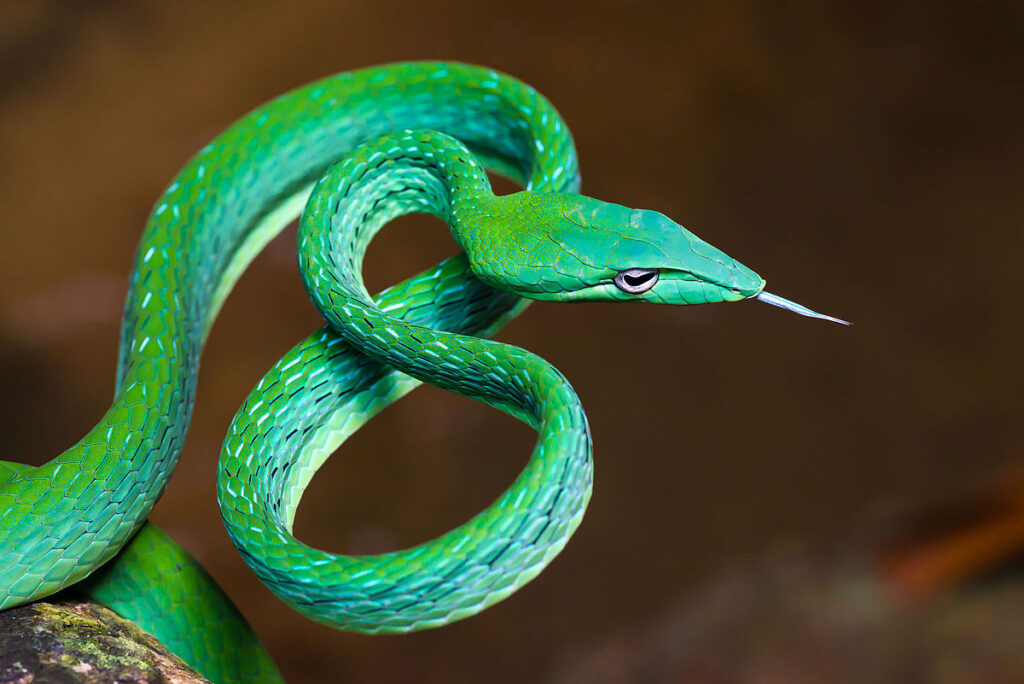
Among the most accomplished practitioners of ribbon-like movement is the vine snake (Ahaetulla spp.), a slender arboreal specialist found throughout Asia. These remarkable reptiles possess extraordinarily elongated bodies that can stretch up to six feet in length while maintaining a thickness comparable to a pencil. Their distinctive pointed snouts and horizontal pupils help them blend perfectly among vegetation. When moving through branches, vine snakes demonstrate their mastery of aerial locomotion by extending their bodies across gaps with minimal support, creating the illusion of a living ribbon suspended in mid-air. This specialized movement allows them to pursue prey through complex canopy structures with remarkable efficiency and minimal disturbance.
The Science Behind Ribbon Movement
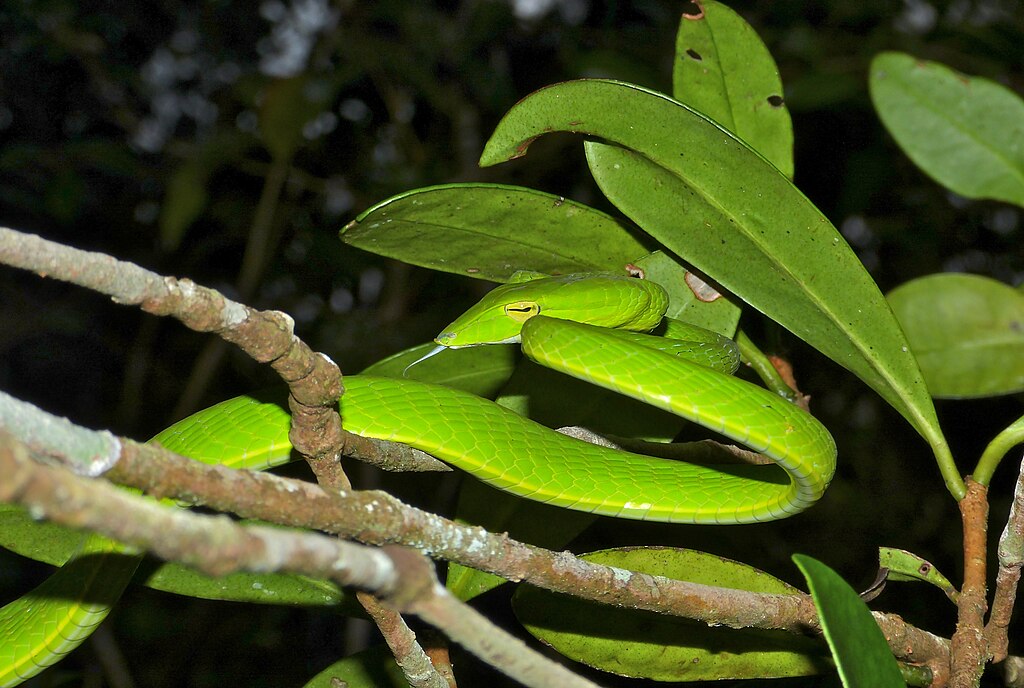
The ribbon-like locomotion exhibited by certain snake species represents a specialized form of arboreal movement known scientifically as “aerial concertina progression.” Unlike ground-dwelling snakes that use lateral undulation to push against surface irregularities, arboreal specialists must contend with narrow, discontinuous supports in three-dimensional space. To accomplish this, they combine several biomechanical principles: maintaining a center of gravity directly above their support, distributing weight across multiple contact points, and using controlled muscular oscillations to create wave-like movements. These snakes possess extraordinary core strength and proprioception (awareness of body position), allowing them to suspend large portions of their bodies in mid-air while maintaining perfect balance. Research has shown that this movement requires up to 30% more energy than ground locomotion but offers superior mobility in complex environments.
Evolutionary Adaptations for Arboreal Life
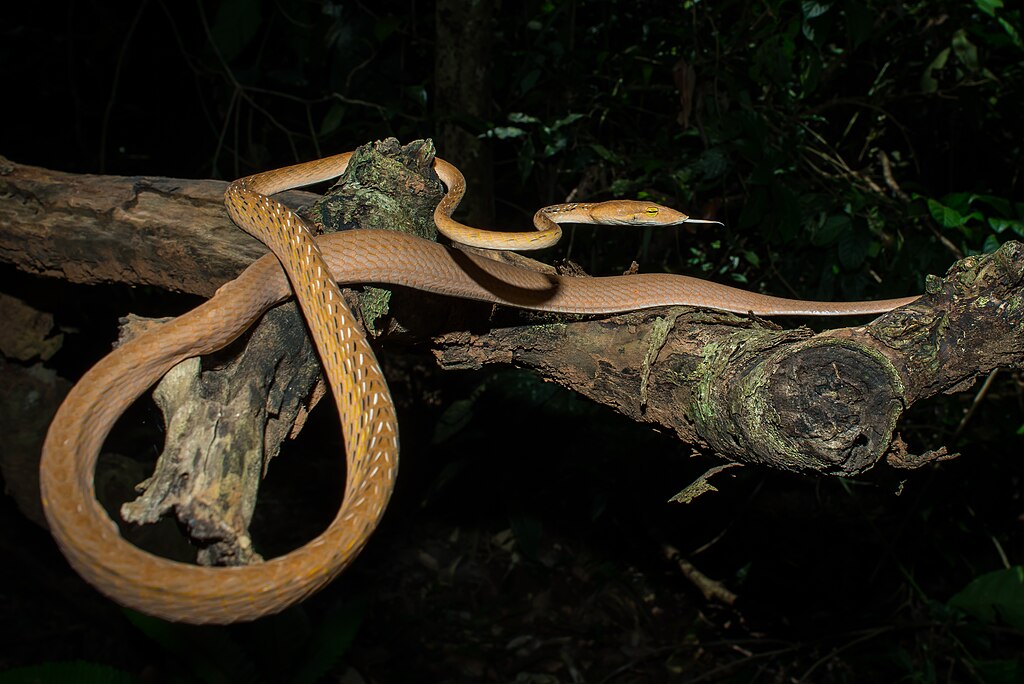
The ribbon-like movement capabilities didn’t evolve overnight but represent millions of years of evolutionary refinement. Arboreal specialists like vine snakes and whip snakes possess several anatomical adaptations that facilitate their distinctive locomotion. Their vertebral columns contain up to 400 individual vertebrae, significantly more than terrestrial species, providing exceptional flexibility. The muscles running along their elongated bodies are specially arranged to allow for fine control of each body segment independently. Additionally, their scales are often keeled (ridged) and arranged in overlapping patterns that create micro-gripping surfaces against branches. Perhaps most striking is their extraordinary body length-to-width ratio, which can exceed 100:1 in some species, creating the ribbon-like appearance that defines their movement pattern.
The Asian Vine Snake: Master of Disguise
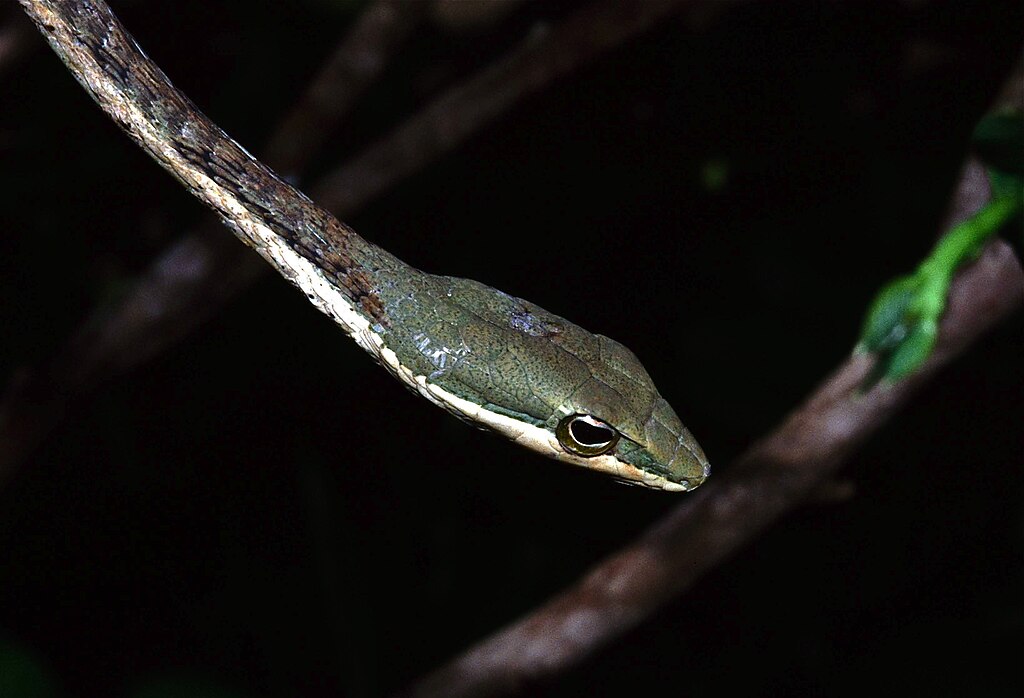
The Asian vine snake (Ahaetulla nasuta) exemplifies ribbon-like movement at its most refined. This species possesses a striking lime-green coloration that renders it nearly invisible among foliage, complementing its movement strategy perfectly. When stationary, these snakes extend their bodies in straight lines that mimic vines or branches, often remaining motionless for hours. When they do move, they create gentle S-shaped curves that sway slightly with air currents, enhancing their camouflage. Their extraordinary patience allows them to drift imperceptibly toward unsuspecting prey, primarily lizards and small birds, before striking with remarkable precision. Researchers studying their hunting behavior have observed that their movement is so gentle that prey animals often fail to register their approach until it’s too late.
The African Vine Snake’s Unique Approach

While Asian vine snakes are masters of ribbon-like movement, their African counterparts (Thelotornis spp.) have developed their distinctive variation. African vine snakes, also known as twig snakes, possess brownish-gray coloration that mimics dead branches rather than living vegetation. Their ribbon-like movement incorporates more pronounced pauses and direction changes, creating the impression of twigs being gently moved by erratic breezes. These snakes have extraordinarily keen eyesight and often hunt with their heads raised above their bodies, scanning the environment while the rest of their form maintains perfect camouflage. Their venom is particularly potent, capable of immobilizing birds and lizards almost instantly, which compensates for their generally slower movement compared to their Asian relatives.
Green Whip Snakes: Speed and Grace Combined
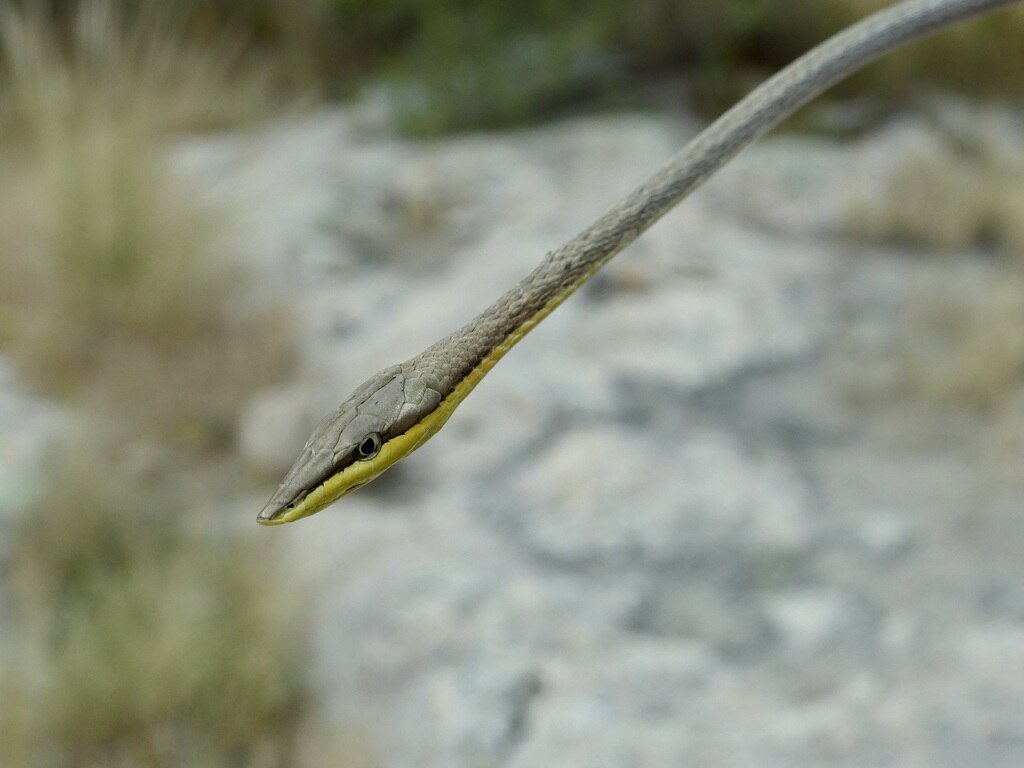
The green whip snake (Hierophis viridiflavus) of Mediterranean Europe demonstrates how ribbon-like movement can be adapted for both arboreal and terrestrial environments. These vibrant emerald reptiles can move with astonishing speed while maintaining fluid, ribbon-like undulations that carry them smoothly through complex vegetation. Unlike strictly arboreal specialists, whip snakes frequently transition between ground and vegetation, requiring versatile locomotion capabilities. They achieve this through remarkable muscle tone and neural control that allows them to adjust their movement pattern instantly as they transition between surfaces. When pursued, they can accelerate to speeds exceeding 7 mph while maintaining their characteristic flowing movement, appearing like animated ribbons racing through the landscape.
The Paradise Flying Snake’s Aerial Ribbon
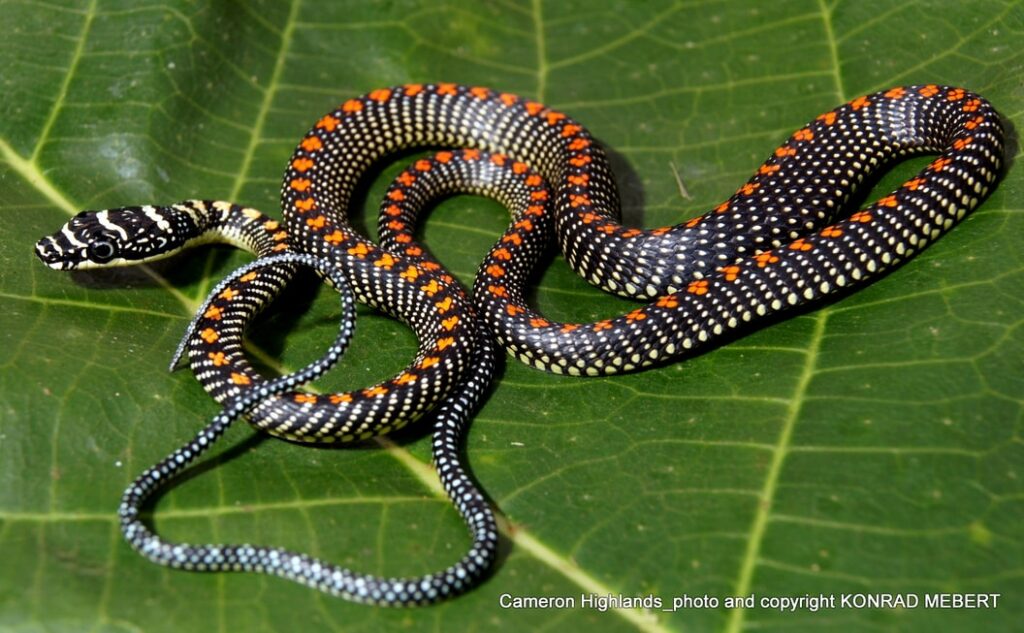
Perhaps the most spectacular demonstration of ribbon-like movement comes from the paradise flying snake (Chrysopelea paradisi) of Southeast Asia. These remarkable reptiles have taken arboreal locomotion to its logical extreme by developing the ability to glide between trees. When launching themselves from branches, they flatten their bodies dramatically by spreading their ribs, transforming into living ribbons that can travel over 100 feet through the air. During flight, they perform undulating S-shaped movements that both generate lift and control their trajectory with remarkable precision. High-speed camera studies reveal that these serpents create vortices of air around their bodies similar to those produced by aircraft wings, demonstrating how their ribbon-like form serves a crucial aerodynamic function.
Hunting Strategies Enhanced by Ribbon Movement
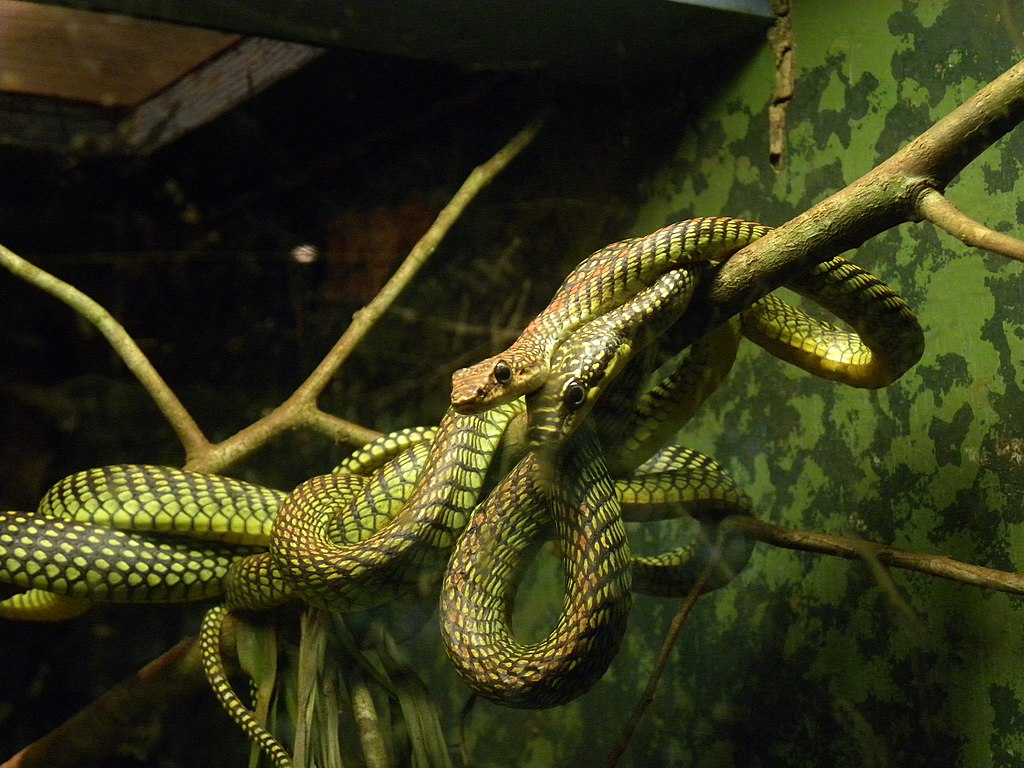
The ribbon-like movement pattern exhibited by these specialized snakes plays a crucial role in their hunting success. By creating minimal vibration in branches and vegetation, they can approach prey without triggering escape responses. The gentle swaying motion mimics natural movements caused by wind, effectively hiding their approach within expected environmental patterns. Many species enhance this strategy with specialized visual adaptations—their eyes positioned toward the front of their heads allow for excellent depth perception and binocular vision. Some species, like the vine snakes, have even developed specialized trichromatic color vision—unusual among reptiles—that helps them detect prey against complex backgrounds while maintaining their deceptive ribbon-like movement.
Defensive Applications of Ribbon Movement
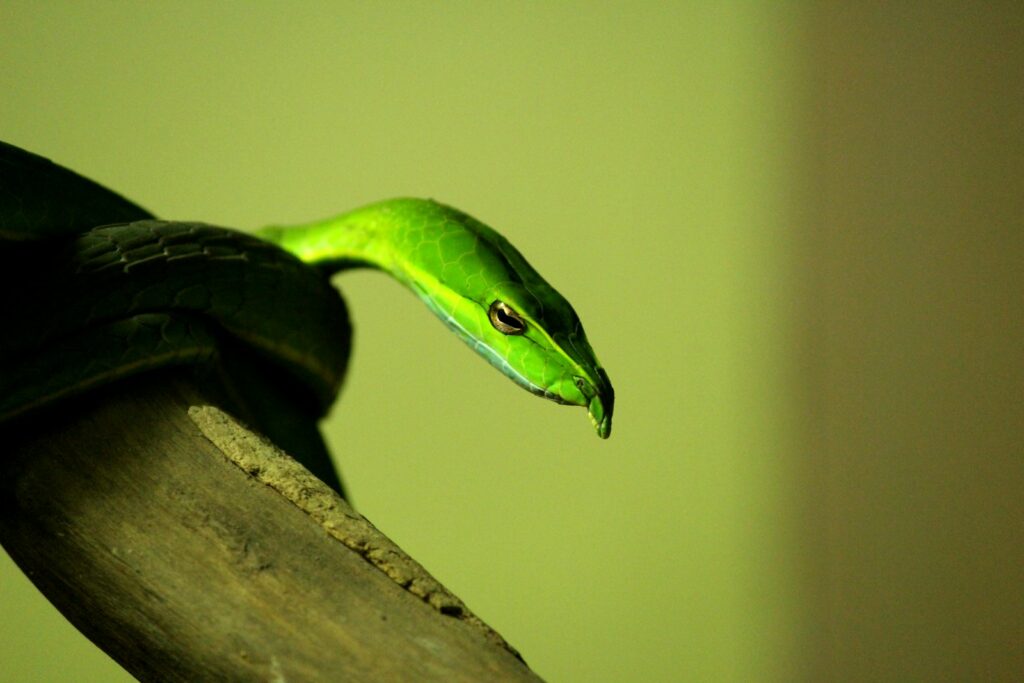
Beyond hunting advantages, ribbon-like locomotion serves important defensive functions for these specialized serpents. When threatened, many species can accelerate their undulating movements dramatically, creating visual confusion for potential predators. The rapid ribbon-like movement makes it difficult for predators to target any specific part of their body. Some species combine this with threat displays where they inflate their necks or expose brightly colored scales normally hidden from view. Others, like the flying snakes, may use their ribbon movement to quickly escape along unpredictable three-dimensional paths through vegetation. Research indicates that birds of prey, the primary predators of many arboreal snakes, have significantly lower capture success rates against species that employ ribbon-like movement compared to those using more conventional locomotion patterns.
Environmental Challenges to Ribbon Movers
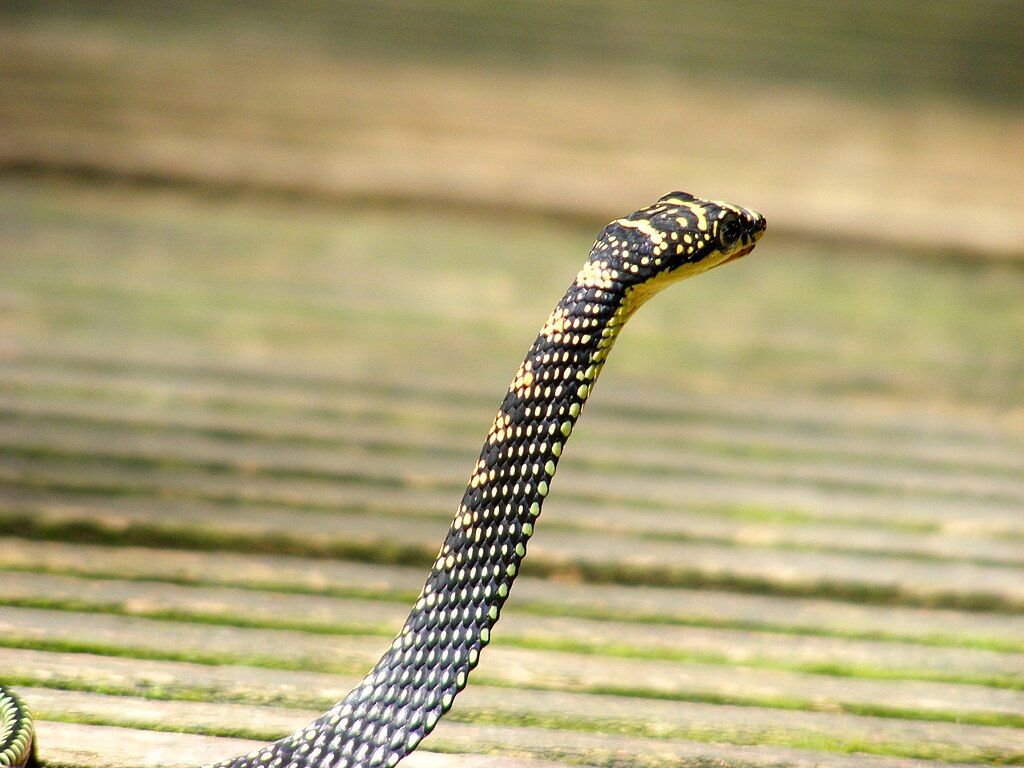
Despite their remarkable adaptations, snakes that utilize ribbon-like movement face significant environmental challenges in the modern world. Their specialized locomotion requires intact canopy structures and connected tree systems, making them particularly vulnerable to habitat fragmentation. When forced to cross gaps larger than their natural gliding or reaching capacity, they must descend to the ground, exposing them to terrestrial predators and hazards they’re poorly equipped to handle. Climate change presents additional challenges, as alterations in precipitation patterns affect the flexibility of these snakes’ bodies and their ability to maintain proper hydration. Conservation biologists have identified several ribbon-moving specialists as indicator species whose population health directly reflects the integrity of forest canopy ecosystems.
Biomimicry: Learning from Nature’s Ribbon
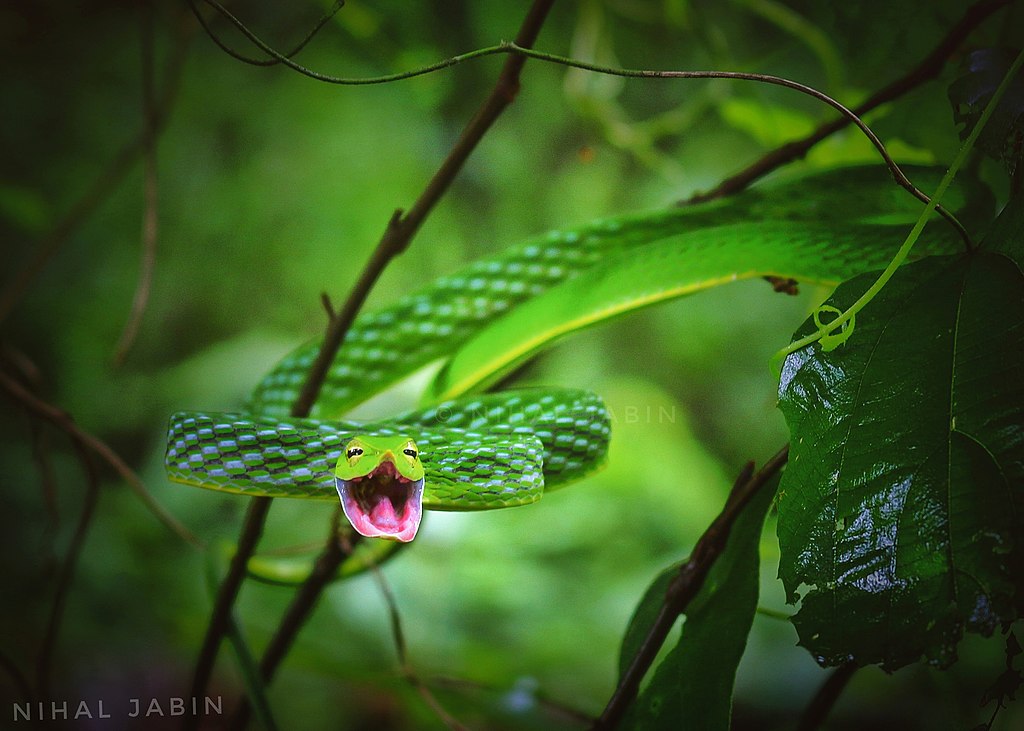
The extraordinary ribbon-like movement of specialized snakes has not escaped the attention of robotics engineers and designers. Their efficient locomotion through complex three-dimensional environments offers valuable insights for developing machines that can navigate similar challenges. Several research institutions have developed snake-inspired robots that use undulating ribbon-like movement to inspect disaster sites, pipeline interiors, and other confined spaces inaccessible to conventional vehicles. These biomimetic robots employ segmented bodies with multiple articulation points controlled by algorithms that replicate the wave patterns observed in arboreal snakes. The medical field has also drawn inspiration from ribbon-moving snakes, with new minimally invasive surgical tools utilizing similar principles to navigate the complex internal geography of the human body during procedures.
Observing Ribbon Movers in the Wild

For wildlife enthusiasts hoping to observe the mesmerizing ribbon-like movement of specialized snakes in their natural environment, patience and proper technique are essential. The best opportunities come in tropical forests during early morning or late afternoon when these reptiles are most active yet still moving deliberately enough for observation. Experienced guides recommend scanning horizontal branches at mid-canopy level while looking for subtle movements that don’t match the wind patterns affecting surrounding vegetation. Binoculars with close focusing capability provide ideal observation without disturbing these sensitive creatures. Several wildlife reserves throughout Southeast Asia, including Thailand’s Khao Yai National Park and Malaysia’s Taman Negara, offer guided nighttime walks specifically focused on spotting arboreal snakes during their active periods when their ribbon-like movement is most prominent.
Conservation Efforts and Future Research
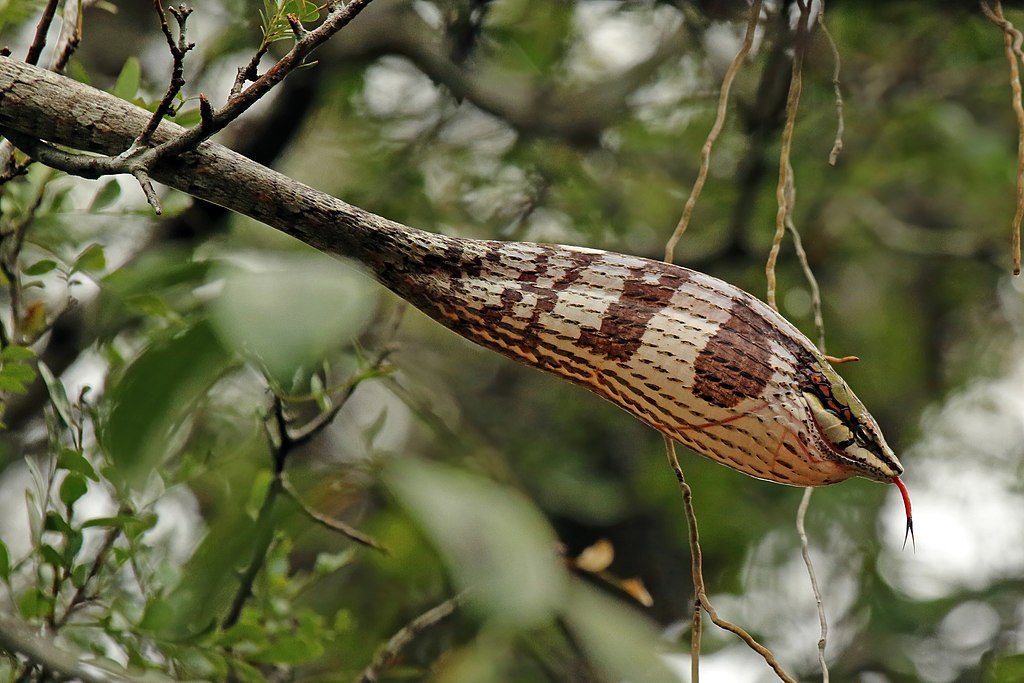
Preserving the remarkable snakes that move like ribbons in the wind requires dedicated conservation efforts focused on their specialized needs. Several international organizations now work to protect continuous forest canopy corridors essential for these species’ movement and survival. Research continues to uncover new aspects of their remarkable locomotion, with recent studies using high-speed 3D motion capture to analyze precisely how these serpents distribute force and maintain balance during their most extreme maneuvers. Genetic studies have revealed surprising diversity within what were once considered single species, suggesting the ribbon-like movement pattern has evolved independently multiple times. As technology advances, wildlife biologists hope to deploy more sophisticated tracking methods to better understand these elusive creatures’ movement patterns throughout their lives, informing more effective conservation strategies for these living ribbons of the forest canopy.
The snakes that move like ribbons in the wind represent one of nature’s most elegant solutions to the challenges of three-dimensional locomotion. Their graceful undulations and remarkable adaptations showcase the extraordinary diversity of movement strategies that have evolved across the animal kingdom. As we continue to study these fascinating creatures, they offer not only insights into biomechanics and evolution but also inspiration for human innovation. Perhaps most importantly, they remind us of the intricate beauty that exists in the natural world—living ribbons flowing through the forest canopy, a testament to the endless creativity of evolutionary processes. Their protection ensures that future generations will have the opportunity to witness one of nature’s most mesmerizing displays of movement and adaptation.




